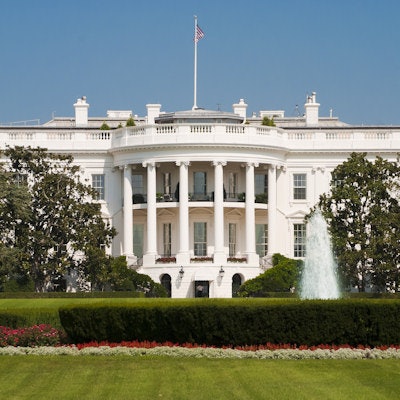
President Donald Trump on December 27 signed a massive federal spending bill that includes a number of changes to reimbursement for radiology and radiation therapy procedures. Trump's move resolves questions about whether the bill would become law after he questioned the size of COVID-19 aid payments.
The $2.3 trillion omnibus spending legislation, officially known as the Consolidated Appropriations Act, 2021, keeps the U.S. government running through the new year, while also providing stimulus payments to help individuals and businesses weather the impact of the novel coronavirus pandemic. Of interest to the radiology community are provisions that reduce a Medicare payment cut for imaging exams from 10% to 4%, while radiation therapy specialists are supporting a postponement to a major change in how Medicare pays for radiation treatment.
The omnibus bill was the output of a carefully crafted compromise between Republicans and Democrats in Congress, and included $600 in stimulus payments to individuals. But Trump surprised legislators from both parties after the legislation was passed by complaining about the size of the payments. He urged Congress to raise the amount to $2,000 or more.
Those efforts went nowhere before Congress adjourned for the Christmas holiday, however, leaving the entire spending bill in limbo. What's more, without the legislation in place the U.S. government would have shut down early this week.
Trump finally relented Sunday night, signing the bill without warning after enduring days of criticism. Critics in particular objected to his opposition to stimulus payments that were negotiated by members of his own administration.
With the crisis averted, members of the radiology and radiation therapy community can look forward to a more predictable start to 2021. Provisions of the bill include:
- A reduction in Medicare provider payment cuts due to evaluation and management (E/M) coding changes from 10% to 4%.
- Revisions in current policy on surprise medical billing, which occurs when patients are billed at out-of-network rates for care they received within their healthcare network.
- A postponement of the start date -- to January 2022 -- for the Radiation Oncology Advanced Payment Model (RO Model), a new method of paying for radiation treatments that shifts from a fee-for-service model to a bundled approach.
- A provision that would extend a ban on raising the age at which breast screening is recommended to start by the U.S. Preventive Services Task Force (USPSTF) from 40 to 50. The USPSTF had voted to recommend the higher age in 2009, but it has been prevented from taking effect by federal legislation. Extending the ban would protect insurance coverage for women seeking annual screening at age 40.
Trump said he decided to sign the bill after receiving an indication from Congress that it would consider raising the COVID-19 payments from $600 to $2,000. The U.S. House of Representatives is expected to vote on Monday on higher payments in standalone legislation, according to an article by CNN.



















